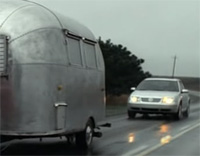 One of the most Dugg stories of the day (and if you don’t know Digg, you should make it part of your daily routine immediately), is a link to a website for a company called DV labs, who have a very impressive flash video sample on their homepage.
One of the most Dugg stories of the day (and if you don’t know Digg, you should make it part of your daily routine immediately), is a link to a website for a company called DV labs, who have a very impressive flash video sample on their homepage.
The video sparked a lot of debate on Digg about what technologies might be behind it, and I wanted to delve deeper to find out if there was indeed any magic.
(contd…)
The homepage of DV labs embeds a straightforward SWF file, containing a single FLV video file and a single MP3 audio file. The video file weighs in at 5,537,802 bytes (or 5.5mb), and the MP3 file weighs in at 723,801 bytes (0.7mb). Combined they are 6.2mb.
The video is exactly 60 seconds long and has exactly 900 frames of video. It runs at a speed of 15 frames per second.
The video is impressive because it seems to load instantly and play back very impressive quality video. But using a streaming FLV file, and some clever timing actionscript, it does not have to buffer the whole movie beforehand, it has the entire 60 second length of the clip to stream the 6.2mb file.
It is thus easy to calculate the bandwidth requirements for the movie.
Each frame of video is 6kb, and each second of sound & audio requires 102kb, which is comfortably less than the 128Kb per second of a 1 meg DSL connection.
The company who makes the codec, On2, clearly have a very fine compression scheme, (here’s one frame of the same video, at medium JPEG compression, weighing in at 18kb), but in terms of delivering it over the pipes to your computer, a DSL connection is more than enough to handle it.
So called IPTV companies are now making full use of these newer compression schemes to offer very high quality, cable TV like services in a number of markets worldwide. This British company has been doing DSL based television in London since 1998!